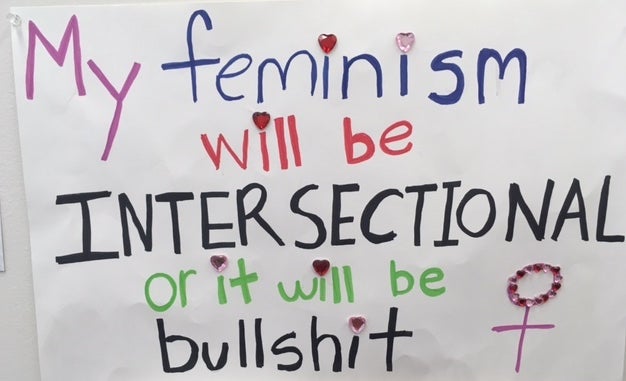
First of all, I want to own up to the fact that I’m guilty of practicing white feminism. I had a defining moment at a training about intersectionality a few years ago that gave me a much needed reality check that although I’ve been advocating for women’s rights for more than 15 years, I had not been intentional about ensuring that I was truly advocating for all women.
One example of this is Women’s Equality Day which occurs every August and is touted to represent the anniversary of women gaining the right to vote. For several years I would organize a voter registration drive on this day as a way to celebrate what I perceived of as a significant milestone. I didn’t think beyond my own perspective as a white woman to consider that not all women gained the right to vote in 1920. The women’s suffrage movement was largely an effort to secure the right to vote for white women, and women of color were not guaranteed this right for decades to come. Additionally, many white suffragettes were actually incredibly racist, intentionally leaving out, or even selling out, women of color.
Another striking example is Equal Pay Day, which is today, April 4, 2017. The date of Equal Pay Day reflects how far into the year a woman must work to make what a man in a similar career made the year before. As a white woman it’s easy to hop on the Equal Pay Day bandwagon and write social media posts that hashtag #80cents, which represents that women, as a whole, make 80 cents to a man’s dollar. But you won’t see me using that hashtag. I don’t want to be a white feminist anymore and that means I’m committed to questioning the mainstream feminist narrative.
The story that should lead on Equal Pay Day, in my opinion, is that the wage gap is dramatically worse for women of color. According to the American Association of University Women, the wage gap is the largest for Hispanic women and Latinas at 54 cents, and the wage gap for African American women is 63 cents. Equal pay day for African American women does not come until August, while Hispanic women and Latinas must wait until November.
The fact that many advocates will stand up across the country today and not lead with facts about how damaging the wage gap is for women of color demonstrates that we still have a long way to go in dismantling white feminism and centering women’s issues around the most marginalized communities.
While I’ve been guilty of white feminism in the past, and probably unconsciously still today, I can work to be a better advocate for women by being willing to look at my own privilege and by owning up to the fact that I am limited by my own life experience. I read a quote somewhere that said “Feminism without intersectionality is just white supremacy.” For the women’s movement to not repeat mistakes of the past, we white women must be willing to challenge our privilege, be open to other perspectives and to step back from the limelight in order to make room for those who are most affected by issues like the wage gap to stand front and center.
